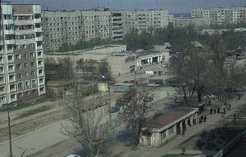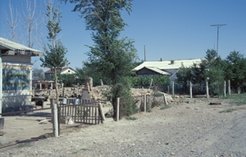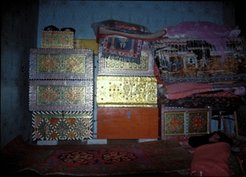Diasporas and Re-Patriants: The Kazaks Return "Home"

(together with Meltem Sancak)
Besides economic change and new identity politics, the independence of the former Soviet Republics had another, less notified, effect. This is the fact that it initiated migration processes of significant scale. These included the out-migration of large numbers of Russians and other European settlers from Central Asia and the increasing labour migration by Central Asians accompanying this process. Another potential reason for migration is the national delimitation process of the Stalinist period, which had left large minorities of "titular nations" on the other side of the borders. Most post-Soviet governments carefully avoid touching on this issue, anticipating the opening of a Pandora's Box if any of them would begin to ask for a re-arrangement of state or ethnic boundaries.
This is somewhat different in the case of Kazakstan. Approximately two million Kazaks live outside the new state, the largest groups in the People's Republic of China and in Mongolia. After gaining independence in 1991, these "diasporas", as they are officially called, were invited to resettle in Kazakstan. The reason for this policy was primarily one of needing to change the precarious demographic situation in the country where the titular group forms only a relative majority, while large areas are populated predominantly by Russians and other European immigrants. A second motive seems to have been to revive traditional culture believed to be better preserved among the diasporas.

The reception of those who decided to come, however, fell short of their expectations. The state hardly had the means to support and integrate them as it had promised and local communities had little to share either. Not surprisingly, the migrants face tremendous difficulties in entering existing social networks. Many of them engage in petty trade and small-scale business, including farming and livestock rearing. Usually, they tend to be more entrepreneurial than local Kazaks, partly because of longer experiences with market-like economies; partly their existence as migrants impels them to do so.

Interaction between migrants and locals is therefore limited. In the concrete field site in the region of Chilik in southeastern Kazakstan this did not result in any physical violence so far but entered a stage of ideological conflict where each side considers itself as being the "better Kazaks". In contrast to many other settings it is the newcomers who can make a strong and convincing case in this regard. Their superior familiarity with the Kazak language and traditional culture as well as with Islam is hardly deniable, even for the locals.

This research tries to depart from the idea of pre-given ethnic entities in a different way than has been done so far. The "cultural stuff" that is connected with the idea of ethnic demarcations is not only fluid and permeable to some degree; it is actively contested and negotiated. In this process different groups of actors bring in their perceptions on "Kazakhood", which they also view as their respective cultural capital. The project analyses how this bargaining between locals and migrants is embedded in the current discourse on national identity on the one hand and the distribution of economic resources and social status within the local community on the other.



